
Table of Contents
Social isolation and loneliness are states of being that many individuals experience throughout their lives. There are various types, causes, and effects of social isolation with a disproportionate effect on some populations, like the elderly. Using targeted interventions and strategies, individuals can combat loneliness and social isolation.
Definition of Social Isolation
Social isolation is when individuals experience a complete or almost complete lack of communication and contact with other individuals and society. It stems from loneliness, a temporary or involuntary lack of connection with others.
Social connection is a fundamental human need for well-being and survival. However, as individuals age, they often discover themselves spending more time alone, which increases their feelings of isolation and loneliness. In addition, a lack of social connection increases physical and mental health risks for individuals experiencing social isolation.
Some researchers question whether social isolation is a condition that is a shared human experience or whether some people have increased feelings of loneliness compared to others. However, despite this, a significant proportion of individuals experience isolation.
Some types of social isolation include remaining at home for long periods, lack of communication with friends, family, or colleagues, and intentionally avoiding contact with others despite opportunities to socialize or communicate.
Isolation typically refers to unhealthy and unwanted solitude that can result in negative self-esteem, loneliness, and fear of others. It can be a potential symptom or a cause of emotional and psychological challenges. Social isolation can have mental health risks for individuals of all ages, with varying symptoms for each age group.
Differences Between Loneliness and Social Isolation
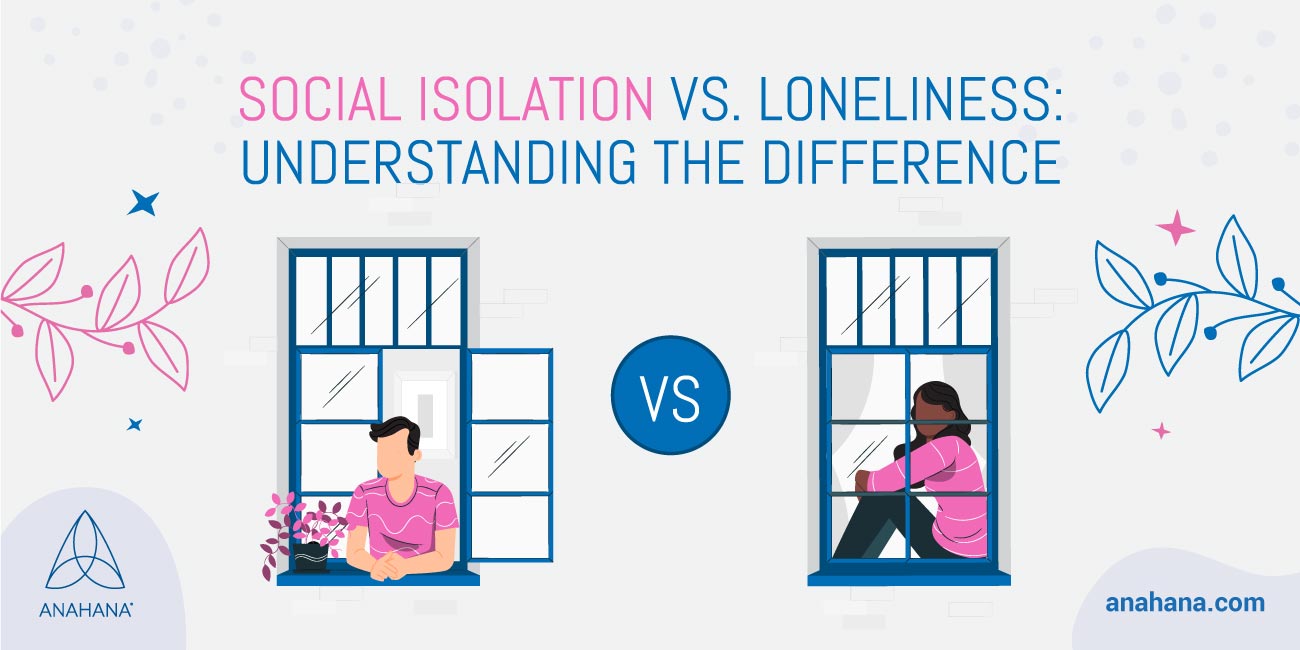 Although loneliness and social isolation are different, they are connected in some ways. Loneliness is the subjective feeling of being separated or alone. In contrast, social isolation is having limited contact or few interactions with people regularly. Individuals can spend a lot of time alone and not feel socially isolated or lonely, and individuals can feel lonely despite being surrounded by people.
Although loneliness and social isolation are different, they are connected in some ways. Loneliness is the subjective feeling of being separated or alone. In contrast, social isolation is having limited contact or few interactions with people regularly. Individuals can spend a lot of time alone and not feel socially isolated or lonely, and individuals can feel lonely despite being surrounded by people.
Currently, there is an aging population where the number of adults aged 65 and over is growing. An increase in the number of older adults also means an increase in the risks of social isolation, as this age group typically experiences higher rates of social isolation. The Coronavirus pandemic has brought on more significant challenges due to physical distancing measures and health considerations for this population.
Types of Isolation
Loneliness is a common experience and can come with life events and transitions, such as moving to new places, the death of loved ones, or divorce. This type of loneliness is known as reactive loneliness.
However, loneliness can become chronic when it continues to exist for a long time and affects all aspects of an individual’s life. Chronic loneliness most likely occurs in individuals without mental, emotional, or financial resources and a lack of consistent human contact.
Significant negative health consequences of social isolation result from chronic loneliness. Individuals who are dissatisfied with their family, social, and community life frequently feel lonely and experience isolation. Individuals experiencing chronic loneliness might be mistrustful of others or feel threatened by others.
Factors Contributing to Social Isolation
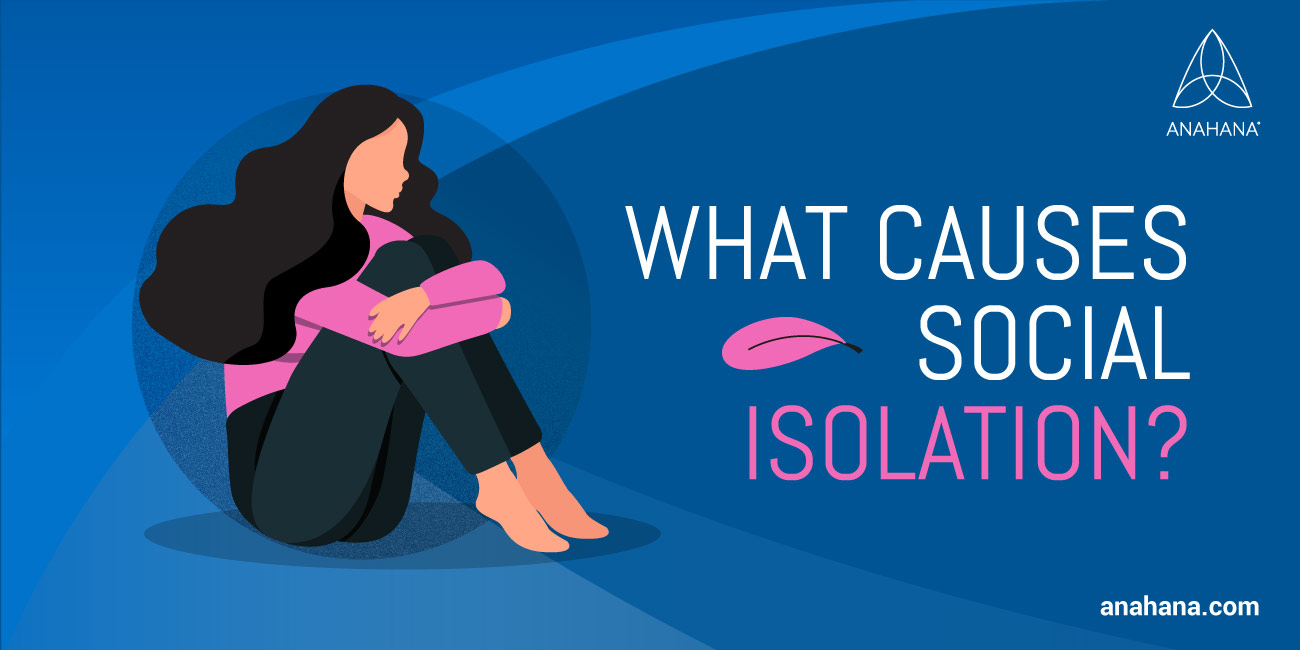 Various risk factors can explain why individuals distance themselves from others and experience social isolation and loneliness. Some risk factors include age, health and disabilities, living alone, economic inequalities, self-esteem, substance use, financial problems, and societal adversities.
Various risk factors can explain why individuals distance themselves from others and experience social isolation and loneliness. Some risk factors include age, health and disabilities, living alone, economic inequalities, self-esteem, substance use, financial problems, and societal adversities.
Social isolation can start early in life during the time of development. Individuals can become preoccupied with thoughts and feelings that they cannot share with others. This behavior can be due to alienation during childhood.
Intimate partner violence can also contribute to social isolation. For example, individuals in abusive relationships sometimes avoid contact with their family members, friends, or coworkers because they are unwilling to reveal their feelings and situations.
People living in remote locations and individuals living in remote or geographically isolated areas due to their jobs, such as military duties, can also experience social isolation.
Perceived Social Isolation
Research shows that a significant contributor to negative health outcomes is perceived social isolation (PSI). PSI can contribute to poorer executive functioning, cognitive decline, and depressive and negative cognition. It also accelerates the aging process in individuals.
Many neuroimaging studies evaluate the effects of PSI. Resting-state functional magnetic resonance imaging (fMRI) showed reduced functional connectivity between the superior frontal gyrus and the cingulo-opercular network, resulting in reduced tonic alertness and executive function, respectively.
Socially isolated individuals also express weaker ventral striatum activation in response to positive or pleasant stimuli, including pictures of objects, events, or people.
The findings suggested that socially isolated or lonely individuals pay greater attention to negative stimuli to a higher degree than individuals who are not lonely or socially isolated.
Effects of Isolation and Loneliness on Physical and Mental Health
Feeling lonely can affect an individual’s physical, cognitive, and overall health. Evidence links perceived social isolation with adverse health effects, including impaired executive function, depression, lower sleep quality, impaired immunity, poor cardiovascular function, and accelerated cognitive decline at all stages of life. Social isolation can also increase the risk of premature mortality for all races.
Mood-related isolation may involve experiencing a depressive episode where individuals isolate to improve their mood and justify their actions as comforting or enjoyable.
Socially isolated individuals might drink or abuse substances, not get enough sleep, and lack physical activity, which can further increase the risk of adverse health effects. Individuals can also experience emotional pain. Losing a sense of community or connection can alter how individuals see the world and increase emotional pain.
Emotional pain can activate stress responses in the body, similar to physical pain. When the stress response is activated for a long time, it can cause chronic inflammation, prolonged release of factors that can cause tissue damage, or reduced ability to fight disease. These effects increase risk and leave individuals more vulnerable to infectious diseases.
Social isolation can also affect brain health. Studies show that loneliness and social isolation are linked to a higher risk of dementia, especially Alzheimer’s disease. Limited social activity and mostly spending time alone can diminish an individual’s ability to perform daily tasks such as cooking, taking medicines, paying bills, and driving.
High-Risk Groups and Older Adults
Some groups face challenges that increase their risk of social isolation and loneliness. The first group particularly vulnerable to the effects of social isolation is immigrants. Immigrants often face cultural, economic, and language barriers and limited social ties, resulting in loneliness and social isolation.
Marginalized groups, including the LGBTQIA community, individuals experiencing homelessness, individuals of color, and others who regularly face stigma, discrimination, and prejudice, can feel socially isolated.
The elderly, or older adults, are also a high-risk group as they often live alone. Vision and hearing loss can also make it difficult for them to interact with and engage in conversations with others which further contributes to their social isolation.
COVID-19 Pandemic and Social Isolation
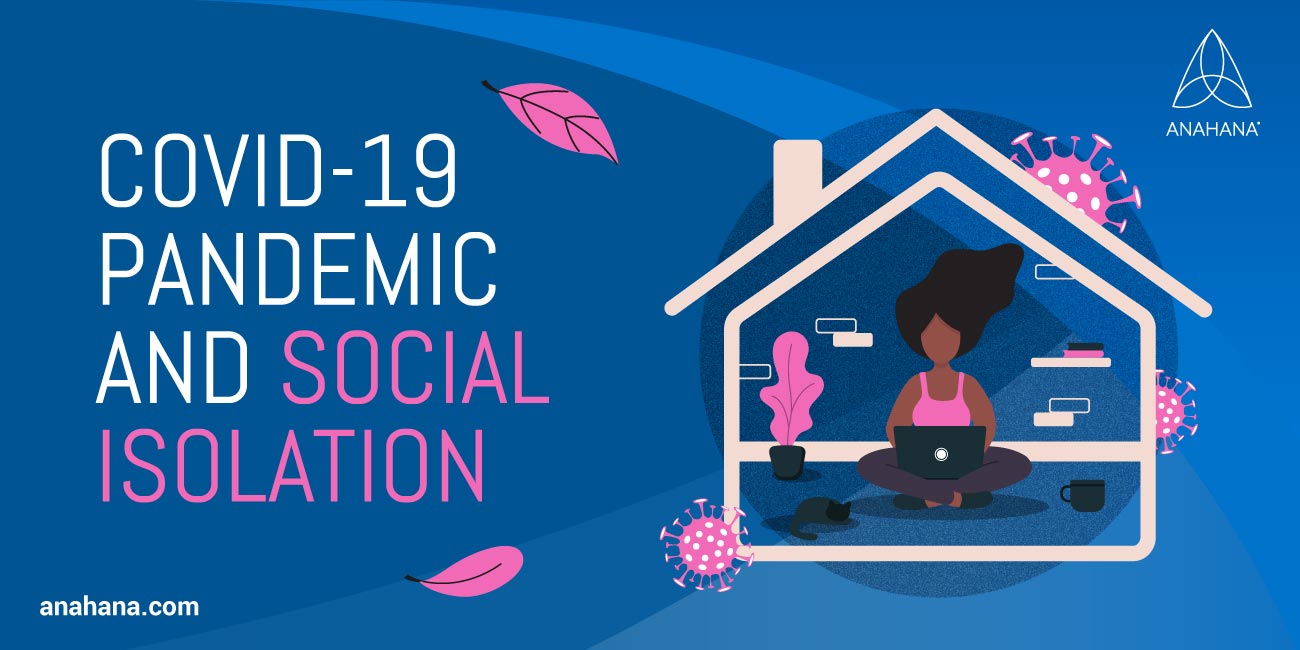 During the covid-19 pandemic, governments implemented physical distancing measures. Individuals were isolated to prevent spreading the virus to other people. Both isolation and quarantine were public health measures to protect individuals from the virus.
During the covid-19 pandemic, governments implemented physical distancing measures. Individuals were isolated to prevent spreading the virus to other people. Both isolation and quarantine were public health measures to protect individuals from the virus.
The effects of social isolation can be specific to public health situations or pandemics that require individuals to undertake physical distancing. However, social isolation, depression, and loneliness can go hand in hand with fear and anxiety about the dangers associated with the pandemic that forced the necessary physical distancing measures.
With reduced activities related to school, work, or leisure, there were limited opportunities for regular in-person interactions. The interactions were also limited within the home environment. The severe and sudden reduction in social interactions resulted in social isolation and feelings of loneliness for all. Lack of social interaction is associated with declining health.
The public health measures, including isolating actions, had a disproportionate impact on elderly individuals as, for most of them, their only social contact is outside their homes, including community centers, daycare venues, or places of worship. Those without loved ones, close friends, and family members rely on visits and support of social care and voluntary services in long-term homes. As a result, they were placed at additional risk, along with the elderly, who were already secluded, lonely, and socially isolated.
Social Isolation Among the Elderly
Social isolation affects approximately nine million older adults in the US. They are often marginalized due to feeling like less productive members of society. A combination of biological and social factors can drive this population into isolation.
A decline in overall health, decreased social connections, including relatives and children, and financial struggles due to retirement or lack of income can also perpetuate feelings of loneliness and isolation.
In older adults, social isolation has been associated with an increased risk of dementia, disease morbidity, general health concerns, and decreased physical mobility. In addition, increased cognitive decline has been linked to increased social isolation in older women who are depressed.
Engaging older adults in social groups such as church groups, book clubs, and communities can reduce loneliness and lead to positive mental health effects. Co-housing centers are gaining popularity worldwide among older adults and young people to improve social connections and decrease loneliness.
Isolation, Health, and Mortality
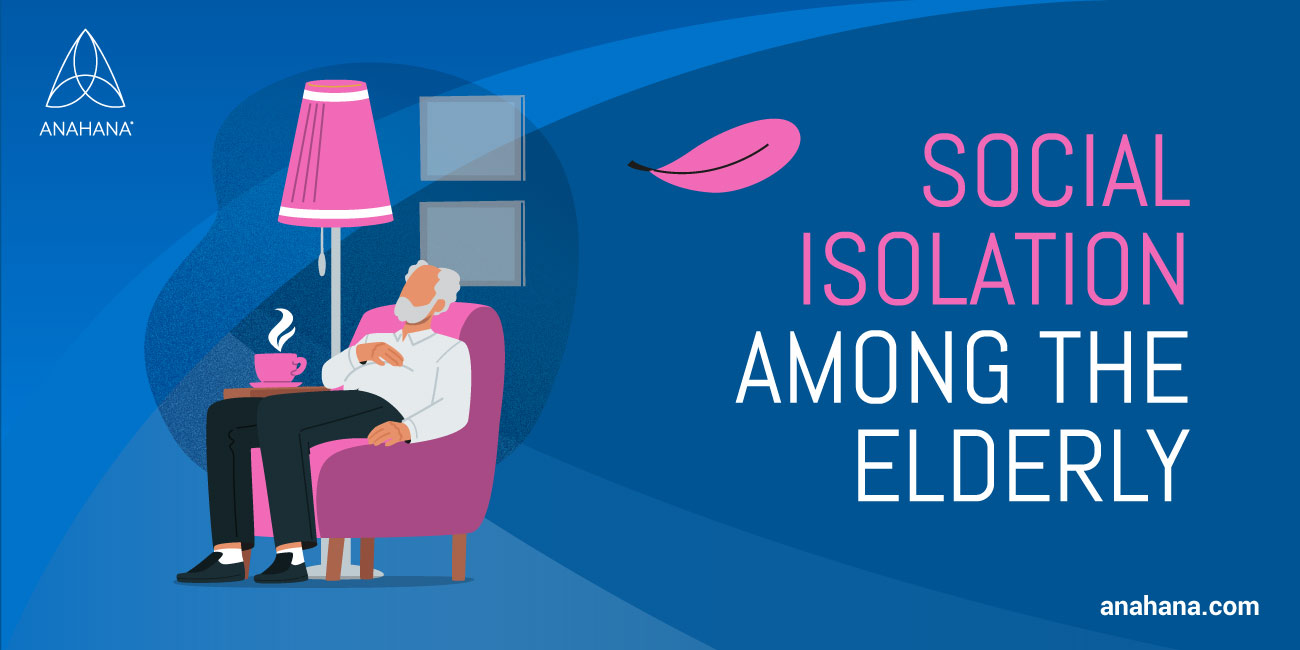 Loneliness and social isolation in older and young adults are linked to a higher risk for poor health and increased mortality. There is a higher risk for early mortality in socially isolated individuals than in those who do not experience social isolation.
Loneliness and social isolation in older and young adults are linked to a higher risk for poor health and increased mortality. There is a higher risk for early mortality in socially isolated individuals than in those who do not experience social isolation.
Studies have demonstrated that social isolation is linked to a higher risk of physical health conditions, including symptoms like elevated stress hormones, cholesterol levels, blood pressure, and weakened immune systems.
Social isolation and mortality in the elderly also share a standard connection to chronic inflammation, with some differences between women and men. Social isolation is also associated with poor mental health outcomes that increase the risk of individuals for various conditions, including anxiety, depression, dementia, substance use, and cognitive decline.
Isolation in Teens and Children
Youth are susceptible to social challenges and experiences during middle school, where their self-esteem is also fragile. Adolescence is a vulnerable period of development, where the youth’s sense of self and belonging at school is of utmost importance. In this period, adolescents really need support from family and friends.
Studies show that developing a sense of belonging is one of the most critical factors for creating adolescents' emotional and social well-being and academic success. Friendship-related social isolation and loneliness are risk factors for depressive symptoms among adolescents than adult-related loneliness or social isolation.
A plausible explanation for this is that the social circle and friends are the preferred sources of social support for adolescents. Therefore, it is linked to depressive symptoms during adolescence. While adults and older children also rely on their loved ones and friends for help.
Research also shows that loneliness in adults can increase the risk of depressive symptoms later in life. Lonely children are more vulnerable to depressive symptoms in youth. Preventing social isolation in childhood can serve as a protective factor against depression in adulthood.
Children and teens who are socially isolated tend to have lower educational attachment due to being part of a disadvantaged social class in adulthood and having a greater chance of experiencing psychological distress.
Children can cope more easily with high-stress levels by receiving social support and resources. Social support strongly correlates with the ability to deal with stressful situations, feelings of mastery, higher quality of life, and an overall positive outlook on life.
Combating Social Isolation and Loneliness
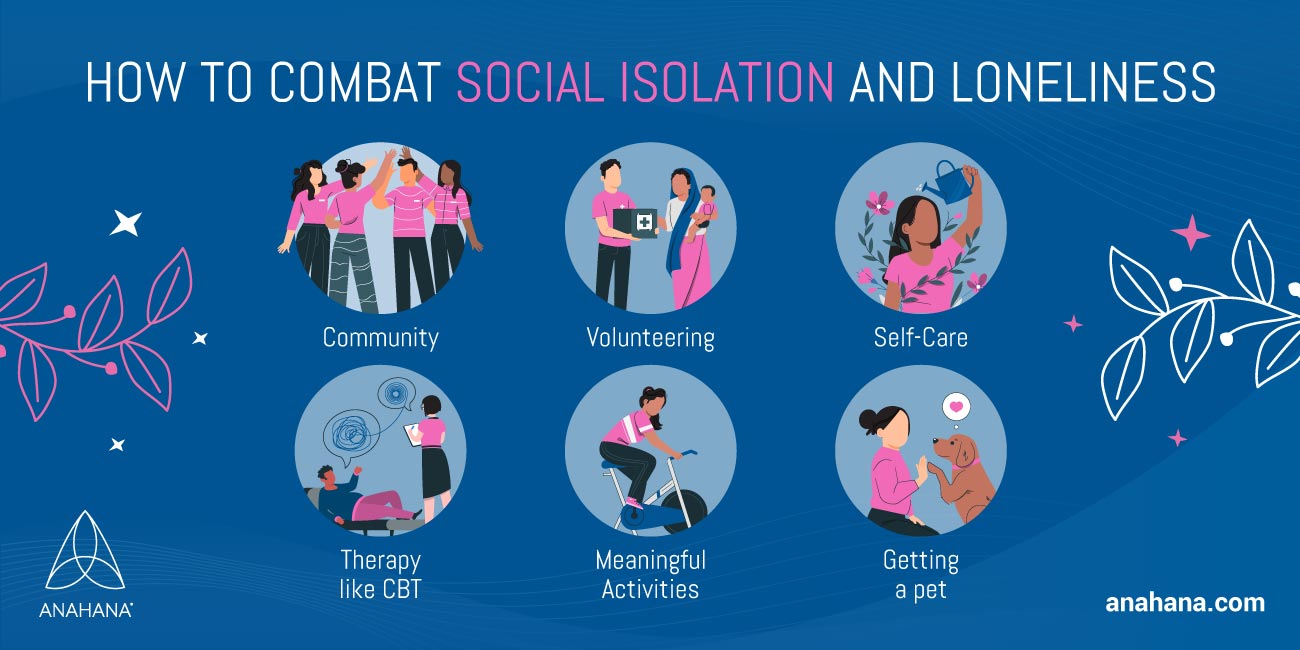 The harmful effects of loneliness and social isolation are established in the literature. Finding solutions to mitigate chronic loneliness is harder, and it is not easy to develop effective interventions for all.
The harmful effects of loneliness and social isolation are established in the literature. Finding solutions to mitigate chronic loneliness is harder, and it is not easy to develop effective interventions for all.
However, there are strategies and interventions individuals can utilize to protect themselves and their loved ones from the risks of social isolation and loneliness. Firstly, individuals must take care of themselves. Eating well, exercising, getting seven to nine hours of sleep per day, and pursuing activities they enjoy can help improve individuals’ mental and physical health and help them manage their stress.
It is also essential to connect with others and remain active. Individuals who engage in purposeful and meaningful activities they enjoy with others foster a sense of purpose and live longer. Activities such as volunteering in the community can help individuals feel less isolated and lonely and give them a sense of purpose in life, which is connected to better health.
Activities like volunteering can also help boost an individual’s mood and improve cognitive function and well-being. Other strategies to help individuals stay connected include finding a hobby or activity they enjoy and joining a class to meet individuals with similar interests.
Scheduling a time every day to communicate and stay in touch with neighbors, friends, and family through voice calls, texts, emails, social media, or even in person can allow them to talk to people they trust and share their feelings. Sending cards and letters can also strengthen and nurture existing relationships.
Adopting a pet for individuals with the capacity and ability to care for them can provide comfort for individuals, lowering their stress and blood pressure and improving their mood.
Staying physically active and engaging in group exercises, for example, joining a walking club or working out with friends or neighbors, has been proven to be beneficial. Adults must aim for at least two hours of physical activity every week.
Minimizing isolation and loneliness can also be achieved by fostering environments in which individuals can look for, identify and intervene when others seem disconnected from others or lonely. Furthermore, interventions that addressed the negative behaviors and thought patterns underlying loneliness could help combat loneliness.
Other interventions are designed to enhance social skills, social support, and more opportunities for social interaction, as social group membership can positively affect the quality of life. Studies show that cognitive behavioral therapy (CBT) can effectively address maladaptive social cognition in adolescents, adults, and children.
References
Loneliness and Social Isolation Linked to Serious Health Conditions
Understanding the Effects of Social Isolation on Mental Health
Social Isolation and Loneliness
DISCLAIMER
The contents of this article are provided for informational purposes only and are not intended to substitute for professional medical advice, diagnosis, or treatment. It is always recommended to consult with a qualified healthcare provider before making any health-related changes or if you have any questions or concerns about your health. Anahana is not liable for any errors, omissions, or consequences that may occur from using the information provided.

By: Anahana
The Anahana team of researchers, writers, topic experts, and computer scientists come together worldwide to create educational and practical wellbeing articles, courses, and technology. Experienced professionals in mental and physical health, meditation, yoga, pilates, and many other fields collaborate to make complex topics easy to understand.
